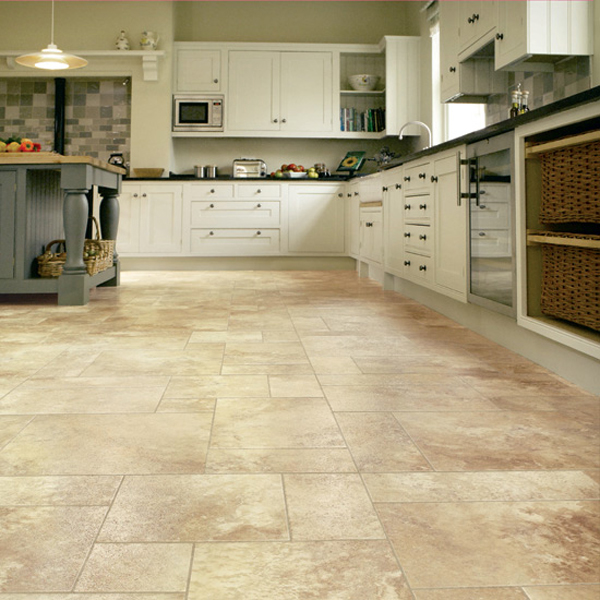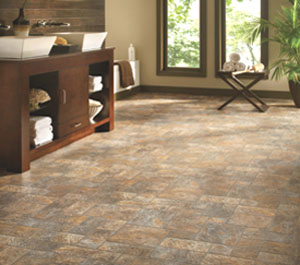Bamboo Flooring Everything There Is to Know
Bamboo Flooring Everything There Is to Know
Blog Article
They are making a number of great pointers regarding Luxury Vinyl Care & Maintenance as a whole in this great article just below.

Bamboo flooring is renowned for many homeowners as a result of its benefits. It is sturdy and available in various shades, from light blond to rich espresso. Additionally, it can be subject to tarnishing to match any décor. Therefore it has become the significant choiced floor for service as well as property owners whenever there is demand for sustainability.
Bamboo simply like wood, is susceptible to dents and also splitting when humidity levels fluctuate.
Are you thinking concerning bamboo flooring for your home? Count yourself lucky since this short article will certainly reveal you every little thing you require to recognize. We will review its features to consider. We will likewise go over the various sorts of bamboo flooring readily available on the marketplace. Maintain reading!
Types of Bamboo Flooring
There are three fundamental options: strand-woven, vertical, as well as horizontal. Home owners can choose which type of bamboo flooring to acquire based upon their qualities. The buyer's designated aesthetic influences the picked Bamboo flooring kind.
Strong - Upright Bamboo Flooring
Thin strips of dry bamboo timber glued vertically as well as pushed using high heat as well as stress create this type of bamboo flooring.
The thinnest side of the bamboo planks will be in an upright kind. After that, a company bonding, pressing, and also lamination will certainly follow. Because of their technique of joining, the bamboo strips feature a narrow grain pattern.
The good thing concerning this sort of bamboo flooring is that it is durable as well as really cost effective. Also, it offers a sophisticated and also sophisticated flooring surface. But it is not extensively offered.
Strong - Straight Bamboo Flooring
You will certainly observe that this type is almost the like vertical bamboo flooring. It has a minor variant. Horizontal bamboo is one of the most prominent sorts of bamboo flooring.
It is made by drying substantial strips of bamboo, slicing these larger pieces into thinner strips, and then gluing them to form slabs. The boards will certainly after that undergo pressure and also heat to guarantee they are well fastened.
All-natural bamboo has a lighter shade. While carbonized bamboo will certainly be less hard than normal bamboo, if you require a darker shade, it might do you excellent.
Strand Woven Bamboo Flooring
Shredding the bamboo to remove the fibers is just one of the much more luring steps in producing strand-woven bamboo floors.
The bamboo fiber is usually mixed with a sticky after it's made to a pulp. The product is then weaved and also compressed under fantastic warm, as the name suggests.
After making straight and also upright bamboo, the strips offer to develop strand woven bamboo. The eco-conscious buyer may discover this feature appealing. The reason is that it ensures that the whole bamboo stalk generates really little waste.
Engineered Bamboo Flooring
Both solid as well as engineered bamboo flooring alternatives are available. Once the bamboo timber fits, it isn't simple to distinguish between them.
Their differences are due to their production. As an example, crafted bamboo timber has a slim plywood backing.
But, whether crafted or solid, bamboo flooring is durable, resilient, as well as eye-catching.
Engineered bamboo flooring utilizes the floating timber flooring over a thin foam base. They may additionally be in the type of vast planks. They are available in widths up to 19 cm.
When Choosing Bamboo Flooring, functions And Also What to Keep in Mind
With a multi-layered covering, bamboo flooring will certainly be quite sturdy. But remember that future touch-ups might need a more competent flooring professional.
Using your surface will certainly make matching repair services simpler as soon as set up in your residence. The surface will not last as long as manufacturing facility coatings.
In addition to that, right here are some interesting attributes of bamboo flooring.
Durable
Bamboo flooring is not produced equal. There are several kinds of bamboo, and also the numerous approaches used to transform it right into slabs affect its longevity.
As such, bamboo, like hardwood flooring, can come to be vulnerable to damage gradually. Damaging, splitting, as well as other wear and tear might take place. You can likewise sand some bamboo to look like hardwood, however not all.
Affordable Maintenance
You can maintain bamboo flooring in good condition by cleaning and also damp mopping. Despite being much more prone to scratches, bamboo flooring is very easy to maintain.
You might get bamboo floors that are as good as brand-new by sanding them down as well as using a fresh coat of paint.
Eco-Conscious
This flooring originates from a natural plant called the bamboo plant. So when contrasted to other tree types made use of to make hardwood flooring, bamboo expands more and also faster.
Bottom Line
It's straightforward to know why bamboo flooring has actually ended up being more popular nowadays. For virtually any type of home, bamboo provides many solid and sound options for the setting. Bamboo floor might be the ideal choice for upgrading your flooring.
We will also discuss the different kinds of bamboo flooring readily available on the market. House owners can choose which kind of bamboo flooring to purchase based on their characteristics. Straight bamboo is one of the most popular types of bamboo flooring.
While carbonized bamboo will be less difficult than normal bamboo, if you require a darker color, it might do you good. After making upright and horizontal bamboo, the strips offer to produce strand woven bamboo.
Bamboo Flooring
Manufacture of Bamboo Flooring
Stranded bamboo is made by shredding the bamboo stalks into small strands, which are compressed into sheets using heat and resin binders, then cut into planks to use as building materials. This form of flooring is available both as tongue-and-groove planks that are nailed down, as well as planks that float over the underlayment. This is a premium form of bamboo flooring, available in many colors.
Horizontal bamboo flooring is manufactured by cutting the strands into thin strips which are then glued together to form planks. This type of flooring has a "grain," since the long stalk fibers are visible in the flooring. This type of bamboo is not as hard or durable as stranded bamboo, but it can have a very striking appearance. It, too, is available both in nail-down planks and as floating floor planks.
Engineered bamboo flooring is made by bonding a thin layer of bamboo onto a plywood or MDF core. This flooring is comparable to engineered hardwood and is installed in the same way—usually with click-lock planks that float over a foam underlayment. It is the least expensive (and least durable) form of bamboo flooring, and it cannot be refinished.
Unless it is stained, most bamboo flooring has a natural blonde or amber color that resembles unfinished maple or birch, but darker tones are available through a process called carbonizing, which entails subjecting the planks to high temperatures. While the color can be very attractive, carbonized bamboo is softer than uncarbonized forms, and is more susceptible to scratching.
Eco-Friendliness
Environmentally conscious consumers are often drawn to bamboo as a wholly renewable resource. Unlike the hardwood lumber industry, where trees can take decades to mature, bamboo stalks grow so fast that there is little environmental liability to the harvest practices. Moreover, bamboo stalks that are cut simply continue to grow and replenish themselves so that they can be harvested.
But the manufacturing process creates other environmental concerns. Bamboo floor planks are manufactured by slicing or shredding the stalks of bamboo grass plants and then compressing the pulp back together using heat, pressure, and a resin-based adhesive identical to those used in many other flooring products. This adhesive often contains urea-formaldehyde that can outgas into the air.1
The level of adhesive used and the amount of toxins emitted will vary, depending on how the bamboo planks are manufactured. Cheaper products may contain more formaldehyde, while more expensive products may use alternative materials in the resins. The amount of formaldehyde used in bamboo flooring is similar to that found in engineered hardwood flooring or MDF sheathing, and it tends to be a problem only for sensitive individuals.2 But if this concerns you, look for bamboo products labeled as formaldehyde-free.
Bamboo Flooring Cost
This material is priced at about the same level as most hardwood floors. You can find bamboo flooring products ranging from about $2 to $8 per square foot, with a national average of $3.84 per square foot. Installation costs for bamboo flooring are much the same as for hardwood flooring. On average, figure on adding about $4 per square foot for installation labor in addition to the cost of materials. You should be able to get a good-quality bamboo installed for less than $10 per square foot, including materials and labor.
https://www.thespruce.com/benefits-and-drawbacks-of-bamboo-floors-1314694

I found that review on How to clean and maintain vinyl flooring when doing a search on the search engines. Appreciated our blog? Please share it. Let someone else locate it. Thank-you for taking the time to read it.
Report this page